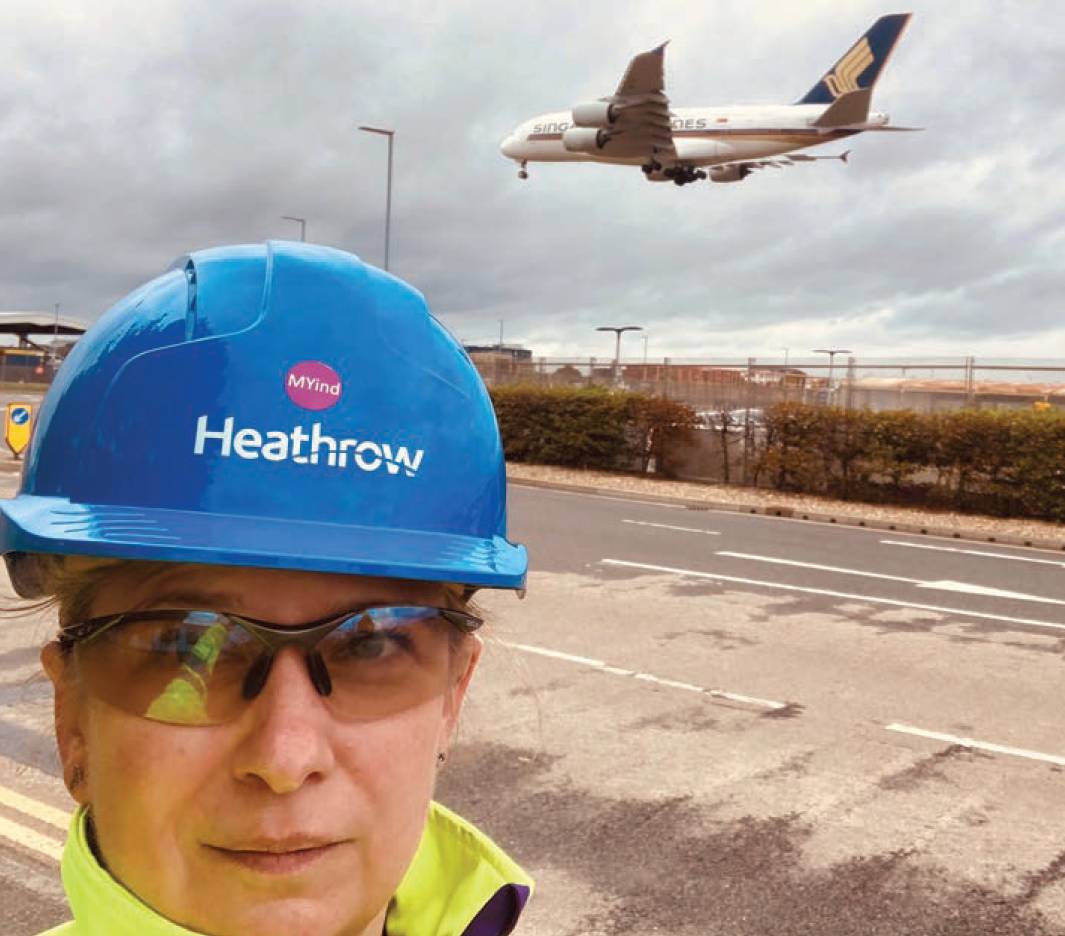INTERNATIONAL WOMEN'S DAY 2025

Jenny McLaughlin, a successful senior project manager at Heathrow Airport, has worked in the airport industry for over 20 years.
I have worked within the airport industry for over 20 years. This began at East Midlands Airport, including working on ISO14001 accreditation and an airspace change. The last 17 years have been at Heathrow Airport in a number of departments, including environment, airside and now infrastructure. I have had the privilege of delivering a number of business changes, including a new aircraft de-icing process and new IT applications, as well as infrastructure delivery such as taxiway rehabilitation, fire training, the ground villa complex and a new virtual contingency facility.
I am dyslexic and have ADHD. I believe the different way that my brain is wired is an asset. I have spoken at a number of industry events on systematic inclusion, bringing to light the criticality of accessibility if we are to remain a safe and sustainable industry.
This is most evident in me being a key player in the creation of RIBA Inclusive Design Overlay, published in the summer of 2023. I’m also a governor for Harrow Richmond and Uxbridge College, and lead the Heathrow Inclusive Learners Partnership to ensure equitable pathways for learners to gain experience, internships and work.
I am currently working with cross industry representatives under the banner of equitable safety initiatives to highlight how everyone experiences safety differently and that there is no mythical average. A wheel of considerations tool will shortly be shared to allow different areas of the business to start to record and measure their impact on the safety of different demographics.
I would say that your job title doesn’t dictate whether you are a leader or not; understand that you have a voice and a role to deliver the changes we need to see in the industry. Believe your voice is valid, feel the fear but take the chance and always ask the curious questions.
I also recommend the book If That’s Leading, I’m In by Julia Middleton, which has really helped me to define a leadership style as part of the Women Emerging global leadership movement.
Understand that you have a voice and a role to deliver the changes we need to see in the industry.
I tried to lead in a style that didn’t work for me, believing I needed to change myself to fit the stereotype of what a good leader looks like. I think the biggest change came when I was diagnosed with ADHD. Initially, I felt the need to mask my differences and fit into a world not designed for me.
However, after being diagnosed with ADHD, I started to better understand and embrace my unique way of processing the world. Supportive line managers, ally network and coaching played a crucial role in challenging ingrained biases and fostering a culture that allowed me to thrive as me.
We have incorporated CDM 2015 requirements with inclusive design as part of our safety workstream. It is important but also complex to ensure you have thought about all the different access requirements and that you are making design decisions based on the best possible outcome. This is because the requirements can overlap; what is needed by one may be a barrier for another and universal design (i.e., one design fits all) may not be the answer.
Instead, incorporating choice and flexibility, so that each individual can understand and choose the best option for them (building in agency needed for dignity and safety) results in a more human-centred approach that respects diversity and works within constraints. This is where we apply the wheel of considerations, an equitable safety initiative developed as a tool to help bring together these elements. It records the outcome as a metric of how different aspects of demographics experience safety and the mitigations that reflect that have been designed.
Examples include presuming everyone has a size six foot or over when designing safe work sites, or recognising that hand grip size and strength differ, allowing for ergonomically safe use of tools to be developed. Or that colour contrast is understood as a barrier that prevents critical interpretation of risks and method statements.